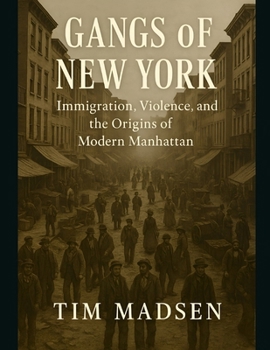Gangs of New York: Immigration, Violence, and the Origins of Modern Manhattan
Gangs of New York: Immigration, Violence, and the Origins of Modern Manhattan is a gripping and richly detailed exploration of the turbulent forces that shaped America's most iconic city. Drawing from historical records, sociopolitical analysis, and the enduring cultural legacy of Martin Scorsese's 2002 film, this nonfiction work uncovers the truth behind the myths-revealing how waves of immigrants, political machines, and violent street gangs forged the foundations of modern urban life.
Spanning the early 1800s through the aftermath of the Civil War, the book traces the rise of notorious neighborhoods like Five Points, the brutal Draft Riots of 1863, and the complex transformation of street enforcers into city leaders. Through ten deeply researched chapters, readers meet the real-life figures who influenced New York's evolution-from Irish laborers and gang leaders to Tammany Hall bosses and reform-minded elites. Each chapter builds a portrait of a city in conflict, yet constantly reinventing itself.
More than a chronicle of crime and politics, this is a story about belonging: about how marginalized communities used defiance, organization, and determination to claim a stake in a city that didn't want them. It is about the uneasy balance between chaos and control, myth and memory, violence and progress.
For readers of American history, urban studies, political science, and cultural criticism, Gangs of New York offers a compelling and unflinching look at how cities grow-not in spite of conflict, but through it.





